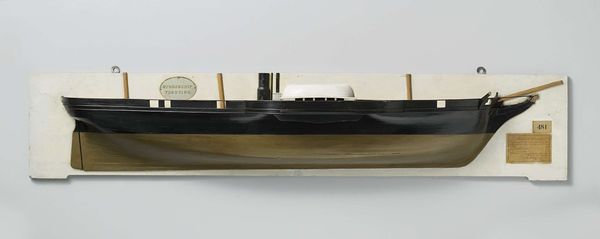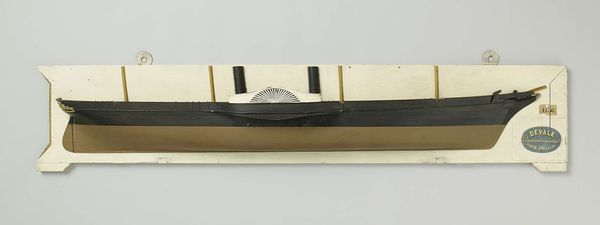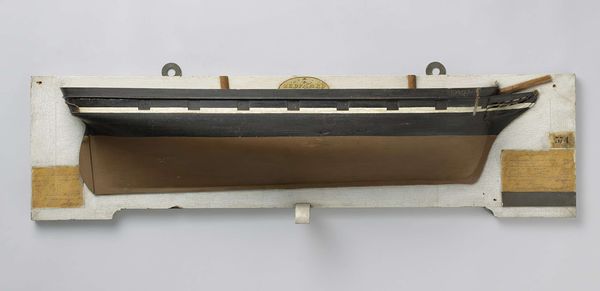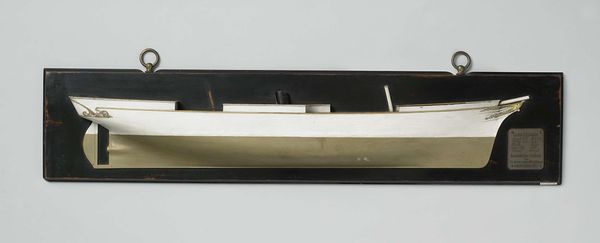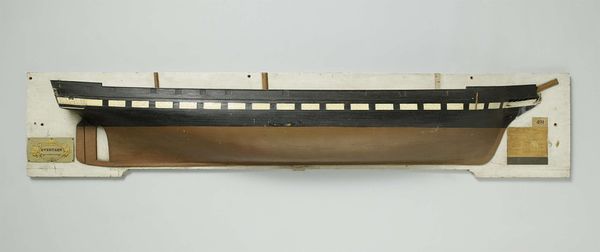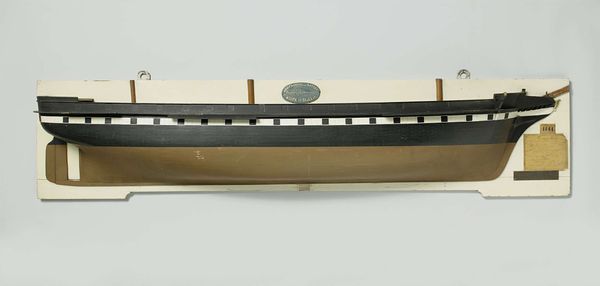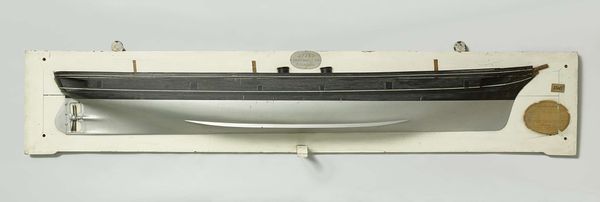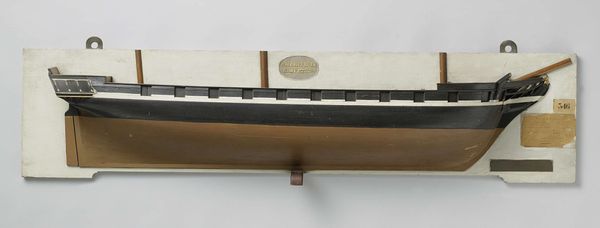
sculpture, wood
#
sculpture
#
wood
#
realism
Dimensions: height 30.4 cm, width 155.8 cm, depth 20.8 cm
Copyright: Rijks Museum: Open Domain
Curator: Here we have a fascinating example of a shipbuilder's model. Made by Rijkswerf Rotterdam between 1842 and 1845, it’s titled “Half Model of a Paddle Steamer," constructed from wood. Editor: The somber tones lend it a grave almost melancholic air, don't you think? The black against that drab yellow evokes feelings of constraint. Curator: Yes, well these models served a very specific purpose. They were commissioned by shipbuilders for potential clients to visualise how the completed vessel would look. In many instances, these wooden sculptures offered a streamlined manufacturing plan for technicians. It was not, as we might consider it today, art for arts sake. Editor: Still, I am interested by the fact that the half model showcases only one side of the ship; the eye must then complete the form, conjure the other half, calling upon both memory and imagination. What did the completed steamer symbolise to people at that time, considering the obvious expense and exclusivity? Curator: Certainly it symbolized industrial power. In the Netherlands, maritime history holds enormous cultural capital and a nascent age of colonialism shaped its symbolism. For private owners the expense certainly advertised one’s own status, which trickled into the public imaginary regarding these majestic vessels. Editor: But notice, how the hull is visually separated from the body. With what does one associate those colours? Does it remind us perhaps of anything relating to what the undercarriage represents, and to whom? A shadow-self, if you will, both unseen and utilitarian. Curator: That's an interesting perspective! I had been solely thinking of the socio-economic impact. Editor: These kinds of visual tools were also prevalent within society’s other mechanisms. They allowed people a rare form of access—akin to now watching someone build a machine via hologram—that would likely remain unknown for ordinary members of society who only lived to watch ships come into port. It allowed their desires a place to focus and grow! Curator: Thanks to that imagery of "the hologram," it resonates strongly, revealing so much about ambition, commerce, and empire. Editor: Precisely! It makes you ponder on so much more.
Comments
No comments
Be the first to comment and join the conversation on the ultimate creative platform.
